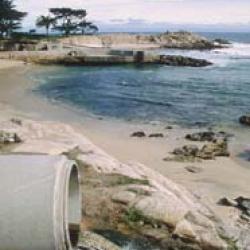Source Institutions
Source Institutions
Add to list Go to activity
Activity link broken? See if it's at the internet archive

In this activity, learners use open inquiry to learn about the process of science as well as gain experience regarding the Law of Conservation of Mass, dissolution, and density. Learners replicate the scientific process that aquatic chemists use to study dissolved and particulate components in natural water samples to determine the level of contamination, the overall water quality, and the optical characteristics of a sample. Learners also replicate the process chemical oceanographers use to conduct research. At the conclusion of this lesson, learners identify a mystery solution.
- 10 to 30 minutes
- 1 to 2 hours
- $1 - $5 per group of students
- Ages 8 - 14
- Activity, Experiment/Lab Activity, Lesson/Lesson Plan
- English
Quick Guide
Materials List (per group of students)
- 25 clear vials (40 ml works well)--filled as described in Table 1. These can be glass or plastic.
- 5 mystery vials--with Tea and dirt (or a real environmental sample if colored and/or containing particulate materials)
- Tap water
- Food coloring (red, blue, yellow, green)--1 drop should color the solution brightly
- Salt--enough to taste, but not supersaturated (needs to be completely dissolved)
- Soft Soap--enough to cause a foam when shaken vigorously
- Sugar--enough to taste, but not supersaturated (needs to be completely dissolved)
- Sand--just a sprinkle that is visible to the eye
- Vinegar--enough to smell
- Dirt--enough to see
- Tea--enough to tint the water yellow
Subjects
-
Earth and Space Science
-
Earth Structure
- Oceans and Water
-
Earth Structure
-
Physical Sciences
-
Chemistry
- Chemistry of Life
- Solutions
-
Structure and Properties of Matter
- Mass and Weight
- Volume and Density
-
Chemistry
-
The Nature of Science
-
The Scientific Process
- Conducting Investigations
- Gathering Data
- Formulating Explanations
-
The Scientific Process
Informal Categories
- Nature and Environment
Audience
To use this activity, learners need to:
- see
- see color
- read
- smell
- touch
Learning styles supported:
- Involves hands-on or lab activities
Other
Includes alignment to state and/or national standards:
This resource is part of:
Access Rights:
- Free access
By:
- COSEE OCEAN
Rights:
- All rights reserved, Centers for Ocean Sciences Education Excellence, 2012
Funding Sources:
- National Science Foundation, 0827983
- National Science Foundation, 0828142
- National Science Foundation, 0827953
- NOAA National Sea Grant
- Office of Naval Research
- National Oceanic and Atmospheric Administration
